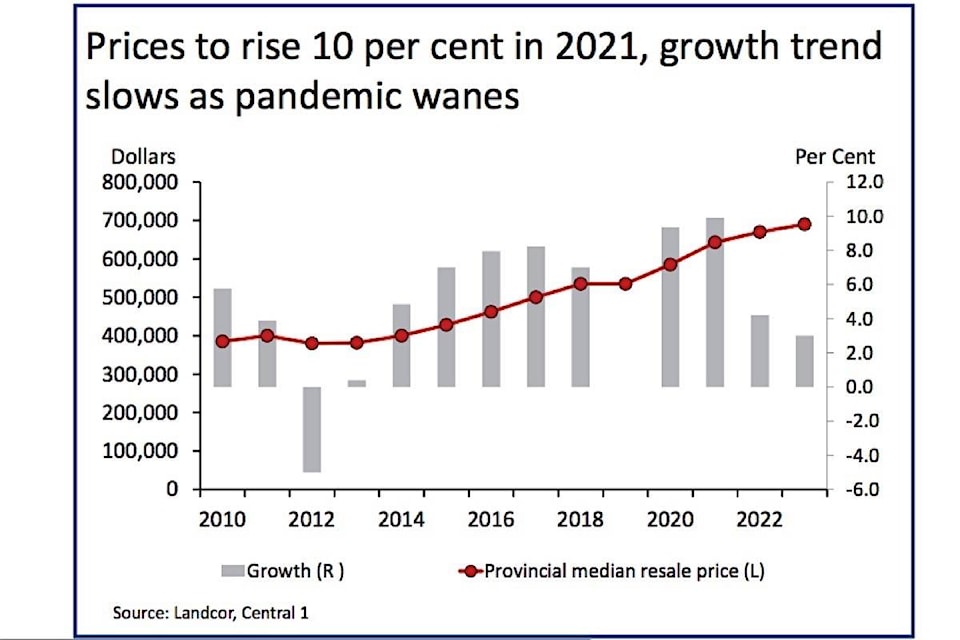B.C.’s red-hot pace of real estate sales will grow by another 37 per cent in 2021 and then drop by 21 per cent in 2022, but prices will continue their upward climb, according to a new forecast by credit union group Central 1.
The median retail price of a B.C. home is projected to increase by 10 per cent this year to $643,000, another 4.2 per cent to $670,000 in 2022, and three per cent to $690,000 in 2023, despite the expected peak and sharp decline in sales activity. Housing starts driven by demand are also expected to increase 10 per cent this year, then level off for 2022 as immigration to Canada has slowed down.
“Year-over-year sales growth will explode in the coming months, following a doubling of MLS home sales observed between March 2020 and March 2021, reflecting record levels of current sales and weakness early in the pandemic period,” Central 1 chief economist Bryan Yu said in his latest B.C. housing market analysis.
Prior to the COVID-19 pandemic, foreign purchasers were the focus of government action, with the former B.C. Liberal government imposing a foreign buyers’ tax and the NDP government following up with its speculation and vacancy tax that also levied its highest rate on property owners outside of Canada.
RELATED: Bidding wars driving up Lower Mainland home prices
RELATED: Rent freeze, construction rules contribute to shortage
With foreign purchasing down to 1.5 per cent of the total, Yu described a “perfect storm” of demand from people in higher-paying jobs working from home and saving for down payments as travel and recreation spending was shut down. And governments have been preoccupied with the pandemic.
“The lack of government intervention may reflect limited tools to temper the market, given the surge of activity is driven by domestic buyers who have strong credit and are already subject to mortgage stress tests,” Yu said. “The primary drivers of the current boom are low borrowing costs and a shift in household pandemic preferences. Both are outside the control of policy makers and are expected to naturally wane as the pandemic eases.”
@tomfletcherbc
tfletcher@blackpress.ca
Like us on Facebook and follow us on Twitter.
